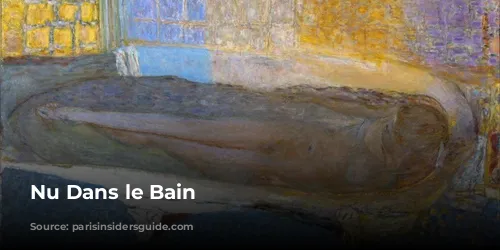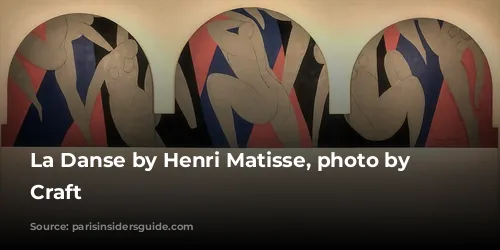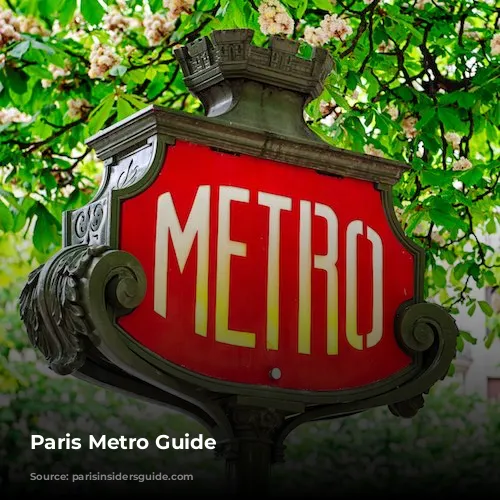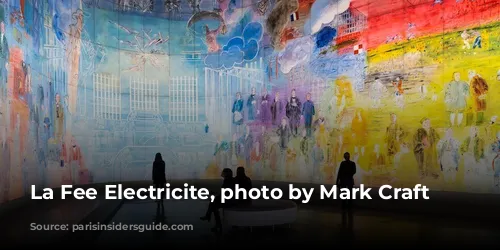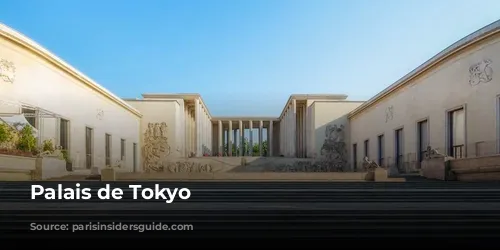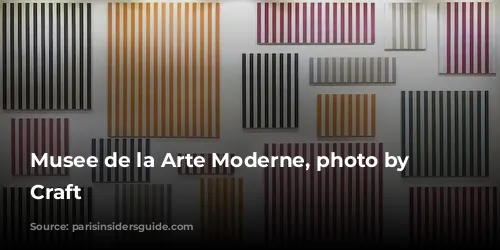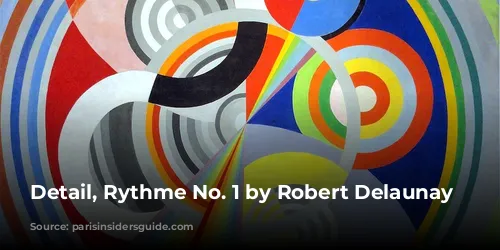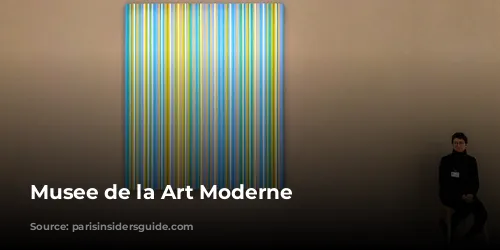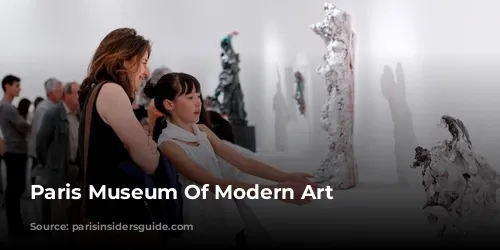Paris, the city renowned for its breathtaking art scene, boasts numerous world-class museums. While the Centre Pompidou and the Musée d’Orsay rightfully attract throngs of tourists, there’s a lesser-known gem nestled near the Eiffel Tower – the Musée d’Art Moderne de la Ville de Paris (Paris Museum of Modern Art). It’s a sanctuary for modern art enthusiasts, holding an impressive collection of over 10,000 works that chronicle artistic brilliance from the 20th and 21st centuries.
This museum is a delightful surprise. It’s a world away from the crowded and somewhat imposing Centre Pompidou, France’s national museum of modern art. The Musée d’Art Moderne is a breath of fresh air – a welcoming and accessible space where art lovers can immerse themselves in the beauty of modern masterpieces. And the best part? It’s free!
A Legacy of Donations: A Journey Through Modern Art History
The heart of this museum’s collection is formed by generous donations, with a pivotal contribution of 500 pieces from a single patron. This collection spans the Fauvist and Cubist movements, showcasing works by prominent members of the École de Paris. The impact of this donation was profound, prompting the museum’s relocation from the Petit Palais to its current spacious home within the Palais de Tokyo, a stunning building along the Seine.
Walking through the museum, you’ll encounter legendary names that shaped the landscape of modern art: Pablo Picasso, Raoul Dufy, Amedeo Modigliani, André Derain, Georges Braque, Marc Chagall, and Henri Matisse. Each artist’s contribution is a testament to the creative energy that surged through the 20th century.
One Artist, One Masterpiece: Henri Matisse’s “La Danse”
The museum is particularly renowned for its “One Artist, One Masterpiece” theme. These iconic works stand as testaments to the artists’ genius, captivating viewers with their vibrant colors, bold forms, and unique perspectives.
One such masterpiece is Henri Matisse’s “La Danse.” This monumental work has a captivating backstory. Dr. Albert Barnes, a prominent American art collector, commissioned Matisse to create a mural for his foundation. The artist, inspired by the theme of dance, dedicated three years of his life to this ambitious project.
Matisse’s pursuit of perfection led him to create three versions of “La Danse.” The first, “La Danse Inachevée” (The Uncompleted Dance), wasn’t quite what he envisioned. Determined to capture the essence of movement and joy, he embarked on a second version, experimenting with a revolutionary technique using cut, colored paper pieces pinned to the canvas. This innovative approach allowed him to make edits with ease. The Musée d’Art Moderne proudly displays both of these early versions, providing a glimpse into the artist’s creative process.
Dufy’s Electric Journey: A Monumental Fresco
Another captivating masterpiece is Raoul Dufy’s monumental fresco, “La Fée Electricité” (The Spirit of Electricity). It’s an awe-inspiring depiction of the evolution of electricity, commissioned for the 1937 International Exposition in Paris. The fresco, measuring an impressive 6458 square feet (600 m2), unfolds like a narrative tapestry.
Dufy’s artistry takes viewers on a journey through time, from the discovery of electricity to its revolutionary applications in the modern world. He seamlessly intertwines mythology with technological advancements, creating a visual symphony of colors and symbolism. Olympian gods and modern power station generators are connected by Zeus’s thunderbolt, symbolizing the power of electricity.
A Modern Architectural Gem: The Palais de Tokyo
The Musée d’Art Moderne de la Ville de Paris is housed within the Palais de Tokyo, a remarkable example of 1930s architecture. The building’s sleek and simple lines are a testament to the era’s architectural vision. It was originally built for the Exposition Internationale des Arts et Techniques (International Exhibition of Arts and Techniques), a celebration of industrial innovation.
The Palais de Tokyo features two wings overlooking the Seine. The striking facade, with its pillared portico and sweeping terrace, seamlessly blends classical and modern elements. The interior, intentionally left plain and unadorned, serves as a blank canvas for the art it houses.
A Shared Space: The Musée d’Art Moderne and the “Palais de Tokyo” Art Space
The Palais de Tokyo is also home to a vibrant art space dedicated to showcasing contemporary art. This space, known simply as “Palais de Tokyo,” offers a platform for emerging artists and innovative works. It embraces a dynamic and experimental approach to art, describing itself as “a rebellious wasteland with the air of a Palace, an anti-museum in permanent transformation.”
While the Musée d’Art Moderne is free, the “Palais de Tokyo” art space has an entrance fee of around 12€. This shared space provides a unique juxtaposition of historical and contemporary art, creating a compelling dialogue between the past and the present.
Conclusion: An Artistic Oasis in the Heart of Paris
The Musée d’Art Moderne de la Ville de Paris is a hidden gem that deserves to be on every art lover’s itinerary. It’s a sanctuary of modern art, showcasing masterpieces from the 20th and 21st centuries in a free, welcoming, and accessible environment. It’s a testament to the power of art to inspire, challenge, and transform. So, the next time you’re in Paris, take a detour from the beaten path and discover the treasures that await you at this extraordinary museum.
